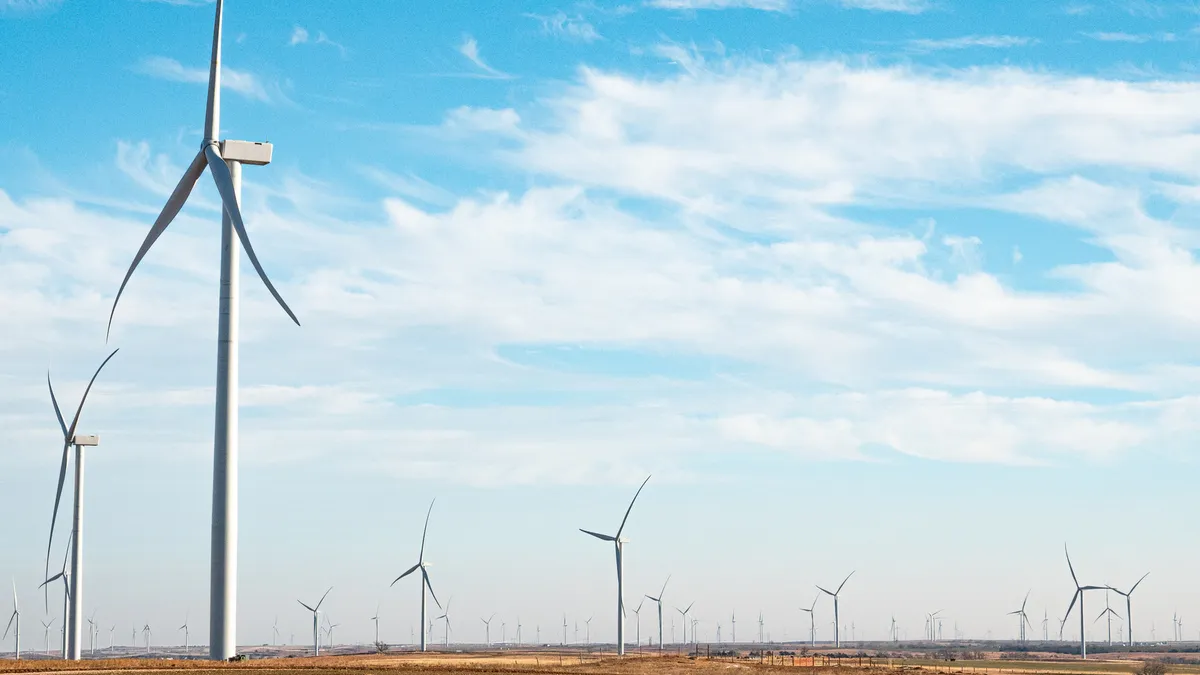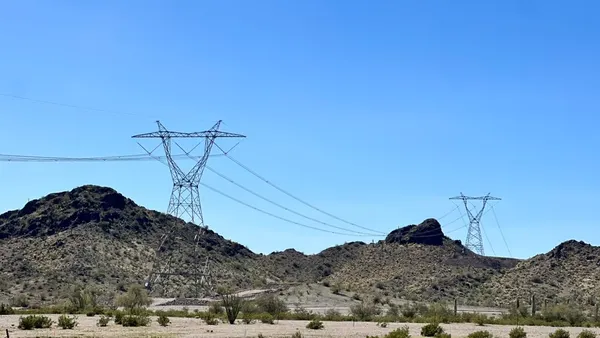Dive Brief:
-
American Electric Power (AEP) plans to sell about 1,600 MW of unregulated wind and solar generation to help the utility company focus on two growth "pinnacles:" regulated renewables and transmission, Nick Akins, the company’s CEO, president and chairman, said in an earnings call with analysts Thursday.
-
AEP expects to complete the sale of its Kentucky Power subsidiary in the second quarter and steer the net proceeds from the deal – estimated at $1.45 billion – into regulated renewable energy facilities, according to Akins.
-
"We are truly transforming the energy grid to better integrate renewable resources delivering the low cost, reliable energy that our customers rely on," Akins said. "And we believe we can successfully enhance shareholder returns in the process."
Dive Insight:
After a record fourth quarter and a nearly 14% jump in annual earnings, AEP increased its long-term annual earnings growth outlook to 6% to 7% a year, up from a 5% to 7% range.
"Our transformation strategy is working and the investments we are making will be used to support our solid earnings growth and results," Akins told analysts.
Over the next five years starting this year, AEP expects it will spend $38 billion on capital investments, including $14.4 billion on transmission infrastructure, $10.4 billion on distribution systems and $8.2 billion on utility-based renewable energy projects.
Through the plan, AEP expects to add 8,600 MW of wind and 6,600 MW of solar by the end of this decade, according to Akins. AEP’s utilities have pending requests for proposals for about 10,050 MW of renewable capacity.
"We're the front edge of a major transformation that's going to benefit our ability to not only help in terms of customer rates, because of the renewables being brought in, but also to be able to deploy the capital necessary to make that happen," Akins said. "So you're going to see a continual process of moving forward with those kinds of activities."
As part of its strategy to focus on regulated operations, AEP plans to sell part or all of its unregulated renewable energy assets housed in its AEP Renewables unit over the next two years, Akins said.
AEP Renewables owns about 1,435 MW of wind capacity and 165 MW of solar capacity in 11 states, according to the Columbus, Ohio-based utility company’s annual report filed Thursday with the Securities and Exchange Commission. Electricity from the facilities is sold under long-term contracts that are 11 years long, on average, according to Julie Sloat, AEP chief financial officer.
"We are fully confident that the sale of this portfolio will both simplify and de-risk our business while allowing us to allocate proceeds and assign additional capital to our regulated business where we see a meaningful pipeline of investment opportunities to better serve our customers and participate in the energy transition," Akins said.
AEP is shifting $1.5 billion in capital spending that had been earmarked for unregulated renewables to transmission investments, Akins said.
AEP is on track to sell Kentucky Power and AEP Kentucky TransCo to Liberty Utilities, an Algonquin Power & Utilities subsidiary, in the second quarter, according to Akins.
"A lot of dialogue will occur" with regulators and stakeholders around the planned deal, which is typical, Akins said.
Under pressure from the Kentucky Public Service Commission (PSC), AEP Service, on behalf of Wheeling Power and Kentucky Power, earlier this month withdrew a request that the Federal Energy Regulatory Commission approve changes to an operating agreement for a coal-fired power plant the utilities own.
AEP's deal with Algonquin Power is contingent on Kentucky Power selling its half of the Mitchell plant to Wheeling Power, another AEP subsidiary that owns the plant's other half and serves part of West Virginia.
Separately, the PSC on Tuesday urged FERC to get more information about how the planned deal might affect consumers in Kentucky. The application doesn’t say whether Kentucky Power will remain in the PJM Interconnection, according to the PSC.
Transmission costs in the AEP transmission zone have increased "exponentially" in recent years because of transmission investments outside Kentucky, the PSC said.
"Whether and under what terms the Kentucky companies remain in the AEP transmission zone or become a stand-alone zone undoubtedly will impact FERC-jurisdictional transmission rates and therefore must be considered as part of the application," the PSC said.
After stripping out one-time factors, AEP’s earnings jumped 13.6% to about $2.5 billion in 2021 from $2.2 billion the year before, driven by rate hikes and transmission investments, according to the company. AEP’s revenue increased to $16.8 billion in 2021 from $14.9 billion in 2020.
AEP’s utilities have nearly 5.5 million retail customers in Arkansas, Indiana, Kentucky, Louisiana, Michigan, Ohio, Oklahoma, Tennessee, Texas, Virginia and West Virginia.















